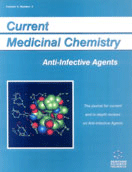Abstract
The vast majority of the world population is infected with herpesviruses. Herpes simplex virus (HSV) infections are the cause of herpes labialis (cold sores) and herpes genitalis (genital herpes). In some cases HSV infections can progress into sight-impairing (herpetic keratitis) or life-threatening disease such as herpes encephalitis or disseminated disease especially in neonates and the immunocompromized patient population. While severe disease is associated with significant morbidity and mortality, the majority of HSV infections in the immunocompetent patient population is often benign and self-limiting from the medical standpoint, but they have an enormous impact on personal relationships and interfere with social contacts and everyday activities. Chemotherapy with acyclovir (Zovirax) and penciclovir (Vectavir, Denavir) and their respective prodrugs valacyclovir (Valtrex) and famciclovir (Famvir) is safe, but only effective if treatment is initiated early during the disease course. Furthermore, these drugs can abrogate disease symptoms but do neither cure nor reduce frequency of recurrent disease. To date no vaccination against herpes simplex disease is available. Broad-spectrum potency, efficacy (especially if treatment is delayed), growing resistance in the immunocompromized patient population, safety including poly-pharmacy and the unmet medical need to cure or reduce frequency of recurrent disease were the key criteria in the search for the next generation of drugs directed at novel antiviral targets. Recently, novel helicase-primase inhibitors superior to marketed drugs regarding all parameters of the preclinical profile have been published. This review summarizes the discovery and current medicinal chemistry of the novel compound classes and provides an up-to-date interpretation of the significant challenge to establish novel therapies for herpes disease.
Keywords: simplex, disease, drug, antiviral, inhibitor, helicase, primase
 13
13

